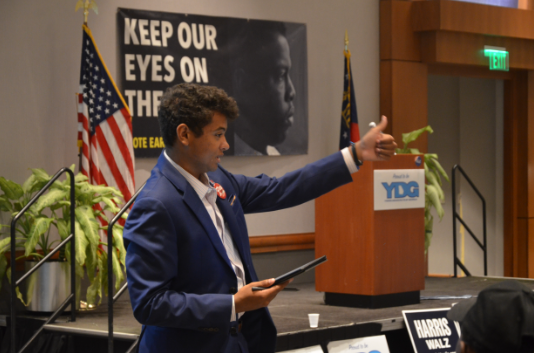Georgia desperate for need based aid
September 8, 2017
It is no secret that college tuitions around the nation are rising every year. These rising prices cause what I call “student-cutbacks,” where large percentages of students are forced to drop out of their universities because they can no longer afford their education.
This problem has grown in Georgia in the past years, and the financial aid offered from schools and the state is not doing enough to help.
According to the Georgia Budget and Policy Institute, from the fall of 2014 to the fall of 2015, 13,000 students in Georgia dropped out of the university system due to problems with tuition. These are the students who the HOPE and Zell Miller scholarships, the HOPE Grant and other university financial aid aim to help — the students who have had the academic success to have the chance to apply to a postsecondary school, but may not have the means to pay for the education.
The problem now is that, for the most part, the HOPE and Zell Miller scholarships only help middle and upper-income students who exceed the academic requirements for the scholarship instead of the low-income students who fail to meet the same requirements. According to the Georgia Budget & Policy Institute, only 30 percent of low-income students in the university system earn either the HOPE or Zell Miller scholarships, compared to 42 percent of middle and upper-income students who receive either.
Georgia’s HOPE Grant, however, does a better job of meeting the financial needs of low-income students. While the grant reaches 74 percent of technical college students in certificate and diploma programs, 85 percent of whom are low-income, it still has flaws. The grant is still not universal, and for the people it does reach, it doesn’t cover the cost completely.
The amount of jobs in Georgia that will require a bachelor’s degree is expected to be 32 percent by 2020, according to the Georgia Budget and Policy Institute. For that number to be met, Georgia is going to need to have a sustainable method of keeping students enrolled in its universities.
The solution to this financial crisis is creating a new, need-based scholarship that is government funded. This would ensure that students whose full financial needs are not met through the Zell Miller or HOPE scholarship, or the HOPE grant, are able to stay enrolled at their universities. This need-based scholarship would also reduce the number of students who take loans to get themselves through college, which has been increasing in recent years.
In the 2013-14 school year, approximately 97,000 students in the university system were unable to cover the full cost of a public Georgia college, even with scholarships, grants and an average $5,500 subsidized loan. What this says is that not only is the cost of universities too high, but that the scholarships and grants already available to students are not nearly enough to allow them to complete their postsecondary education.
In Georgia, where postsecondary education is becoming more and more of an expectation, the state has an obligation to make this opportunity feasible for more students. The expansion of the HOPE grant and the creation of a new need-based state scholarship are two measures that should be taken to help the struggling students in the state.





